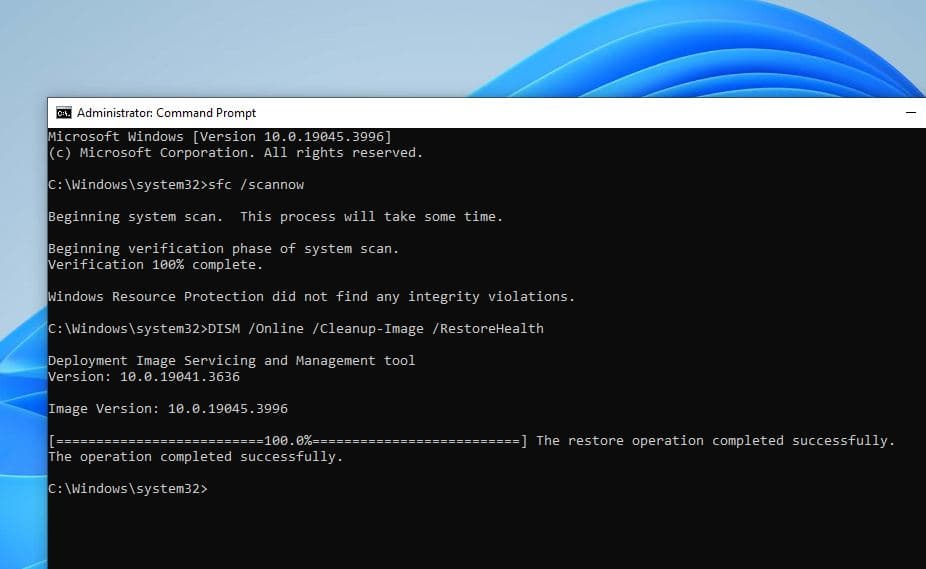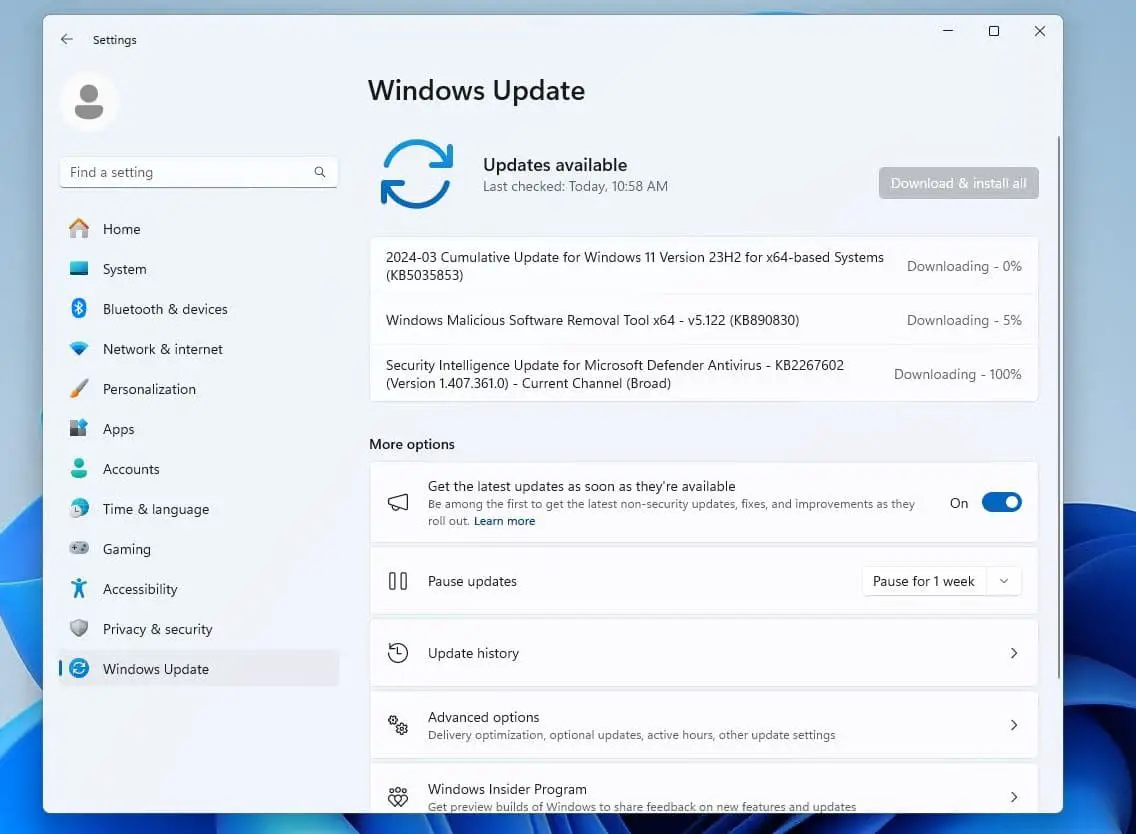The “Instruction at referenced memory could not be read” error usually occurs when a program attempts to access a memory address that it doesn’t have permission to access, or that the memory is corrupted. You may encounter this error while shutdown or restarting Windows 11, when opening web browser, launching a graphics-intensive program, or even during gameplay. This error can occur due to various reasons, corrupt system files, software conflicts, a temporary memory glitch, or technical issues with your hardware are common. This article explores few potential solutions that help others resolve the Memory Cannot Be Read or write Error,
Fix Instruction at Referenced Memory Error
This particular error can occur any time without any clear cause. Most of time users report getting Instruction at Referenced Memory Error while shutdown their PC or opening Chrome browser. It’s a memory related issue occurs when a program attempts to access memory that it either doesn’t have permission to access or that doesn’t exist.
- One of the primary reasons behind this error is problems with system memory, such as faulty RAM modules or conflicts with virtual memory settings.
- Corrupted or missing system files can also lead to this error, as they may prevent the program from accessing the required resources.
- Sometimes, the error may be triggered by bugs or glitches within the software itself, especially if the program is poorly coded or incompatible with the operating system.
- Outdated or incompatible device drivers can cause conflicts that result in the “Instruction at referenced memory could not be read” error.
- Malicious software such as viruses or spyware can interfere with system processes, leading to memory-related errors.
Whatever the reason here are six troubleshooting methods you can apply whenever you run into this error.
Perform a Clean Boot
A Clean Boot starts Windows with a minimal set of startup programs and services, similar to Safe Mode but allows you to enable or disable specific startup items selectively. whenever you encounter such error, Performing a Clean Boot helps identify and eliminate software conflicts as it prevents non-essential programs and services from running during startup.
- Press the Windows key + R, type “msconfig” and press Enter to open the System Configuration utility.
- Go to the “Services” tab, Check the box next to “Hide all Microsoft services” to prevent essential Windows services from being disabled.
- Click on “Disable all” to disable all non-Microsoft services.
- Go to the “Startup” tab and click on “Open Task Manager.” Disable all startup programs by right-clicking on each one and selecting “Disable.”
- Close Task Manager and click “OK” in the System Configuration window.
- Restart your computer to apply the changes and boot into a clean environment.
Check System Memory for errors
Memory (RAM) error is the most common reason behind this error. Faulty RAM modules can result in data corruption, system crashes, and various error messages, including the “Instruction at referenced memory could not be read” error. Running built-in memory diagnostic tool helps identify and fix any memory errors that could be causing the error.
Repair System Files using SFC and DISM
System files are essential for the proper functioning of the operating system and installed applications. If for some reason these files are Corrupted or missing can result from various factors, including software glitches, hardware issues, and malware infections, leading to system instability and Memory Could Not Be Read or Write errors. Running built-in system tools such as System File Checker (SFC) or Deployment Image Servicing and Management (DISM) helps repair corrupted or missing system files and probably fix the error.
- Press Windows key + S and type cmd, right-click on the command prompt select run as administrator,
- Type the command sfc /scannow and press enter key to scan and repair system files, this may take some time depending on the system file corruption level.
- Once the SFC scan is complete, run the DISM command DISM /Online /Cleanup-Image /RestoreHealth
- Allow the Deployment Image Servicing and Management (DISM) tool to scan and repair any component store corruption.
- Once the scanning is complete 100% restart your computer to apply changes.
Increase Virtual Memory
Virtual memory, also known as the paging file, is a combination of RAM and a portion of your hard drive. When the RAM isn’t enough to perform a task, Windows temporarily moves data that would normally be stored in RAM to a file on your hard drive called the paging file. Increasing the size of this file (virtual memory or pagefile.sys) help several users fix the “Instruction at Referenced Memory Could Not Be Read or Write” error.
- Press the Windows key + R, type sysdm.cpl and click on ok,
- Go to the “Advanced” tab and click on “Settings” under the Performance section.
- Again go to the “Advanced” tab and click on “Change” under the Virtual Memory section.
- Uncheck the box that says “Automatically manage paging file size for all drives.”
- Select the drive where Windows is installed (usually C:) and choose “Custom size.”
- Set the Initial size and Maximum size values based on the recommended size provided by Windows or your own specifications.
- Click “Set” and then “OK” to apply the changes. Restart your computer for the changes to take effect.
Repair Disk Errors Using chkdsk
Over time, hard drives and other storage devices may develop errors due to factors such as wear and tear, power outages, or improper shutdowns. These errors cause data corruption, file system inconsistencies, or bad sectors, which can impact system stability and performance. Running built-in CHKDSK utility scans for and repair errors, bad sectors on hard drives and helps address this memory error as well.
- Again open the command prompt as administrator,
- Type command chkdsk C: /f /r and press enterkey
- If prompted to schedule a disk check on the next restart, type “Y” for Yes and press Enter.
- Restart your computer to initiate the disk check. Allow the process to complete, which may take some time depending on the size of your disk and the extent of errors detected.
- Once the disk check is complete, your computer will restart automatically.
Install latest Windows update and software update
Running outdated software, including the operating system and third-party applications, also be the reason behind this error. Updating installed software, including the Windows OS and third-party applications, addresses compatibility issues and resolves software-related errors.
- Open the Start menu and click on “Settings” (the gear icon).
- Go to Windows Update then hit the check for Updates button,
- If new updates are available allow them to download and install on your computer.
Also, click on advanced options then optional update, and check under the options update section if driver updates are available checkmark and download.
In addition, Updating drivers to the latest versions resolves potential compatibility issues and minimizes the risk of encountering the “Instruction at referenced memory could not be read” error.
Scan your system for Malware infection
Malware, such as viruses, spyware, and other malicious software, can interfere with system processes, compromise system stability, and lead to various error messages, including this one we are troubleshooting. If the above solutions didn’t fix the problem, its recommended to perform a full system scan using Windows security (defender) or third-party reputable antivirus software that helps detect and remove malware infection that probably causing the error.
Open your preferred antivirus software or Windows Security and perform a full system scan to thoroughly check for malware infections. Allow the scan to complete. This may take some time depending on the size of your storage and the speed of your system. If any malware is detected, follow the prompts to quarantine or remove the threats.
Again sometimes, User profiles can become corrupted due to various reasons, leading to errors. You can try creating a new user profile and login with the newly created account to check if the issue is with your current user profile. If the new profile works without issues, you can migrate to it permanently.
Also read:





